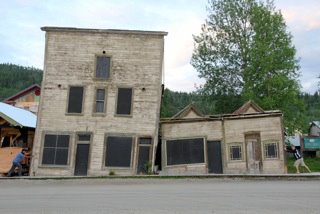
Dawson City exists in a subarctic climate, the sort of place with a lot of permafrost—soil that remains frozen year round. In order for permafrost to happen, the mean annual temperature has to be colder than 0 degrees Celsius (32 degrees Fahrenheit). But, in Dawson City, as in other parts of the Arctic, climate change has brought with it warmer mean temperatures. That means melting permafrost, a problem that affects the structural integrity of buildings built on the once-solid ground.
Evidence of melting permafrost in the central Yukon comes from Ottawa's Carleton University. The school's geography department has been studying the issue for 20 years. Its research shows the ground temperature in and around Dawson is increasing dramatically. That melts the permafrost and destabilizes the ground supporting the critical infrastructure.Read the rest of this CBC radio transcript about permafrost melting in Dawson City.
Northern Climate Exchange co-ordinator John Streiker says things will probably get worse for Dawson before they get better. "All of your infrastructure, anything that's buried – foundations of buildings, even road beds, things like that – they all push up and down," says Streiker.
The photo above comes from Canada's Climate Change, a Facebook page highlighting real-world examples of Canada's changing climate.

No comments:
Post a Comment